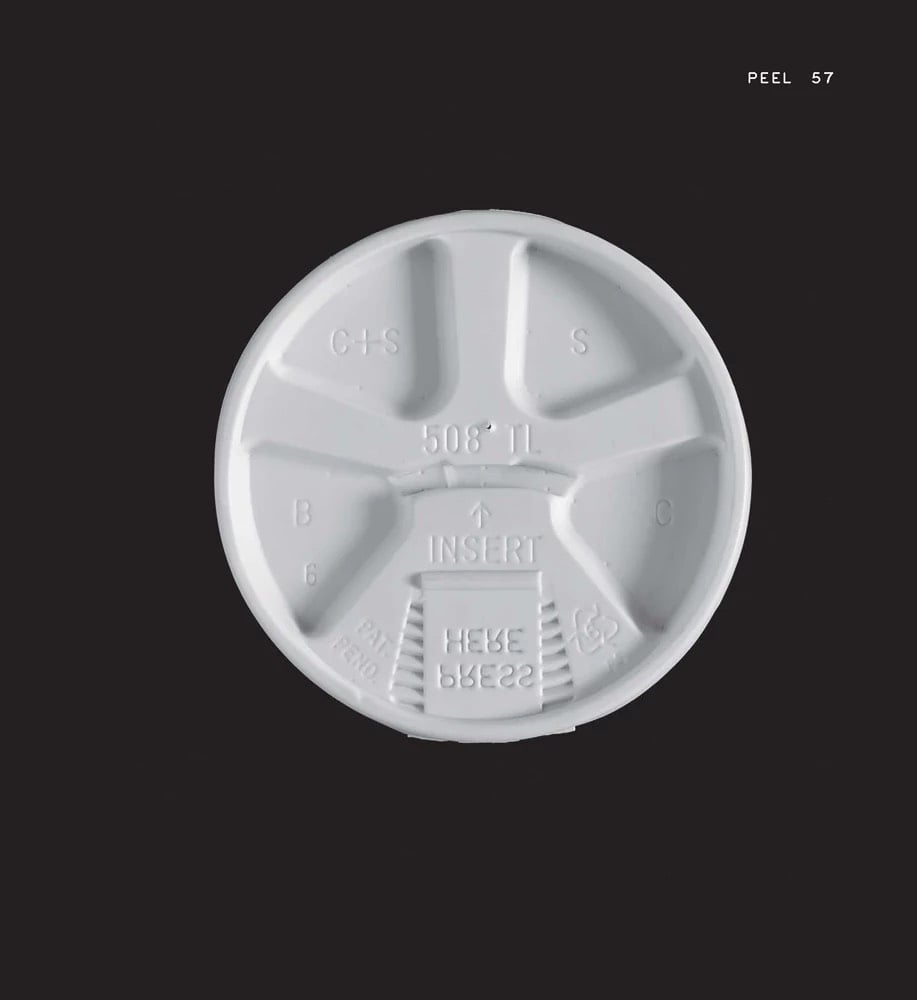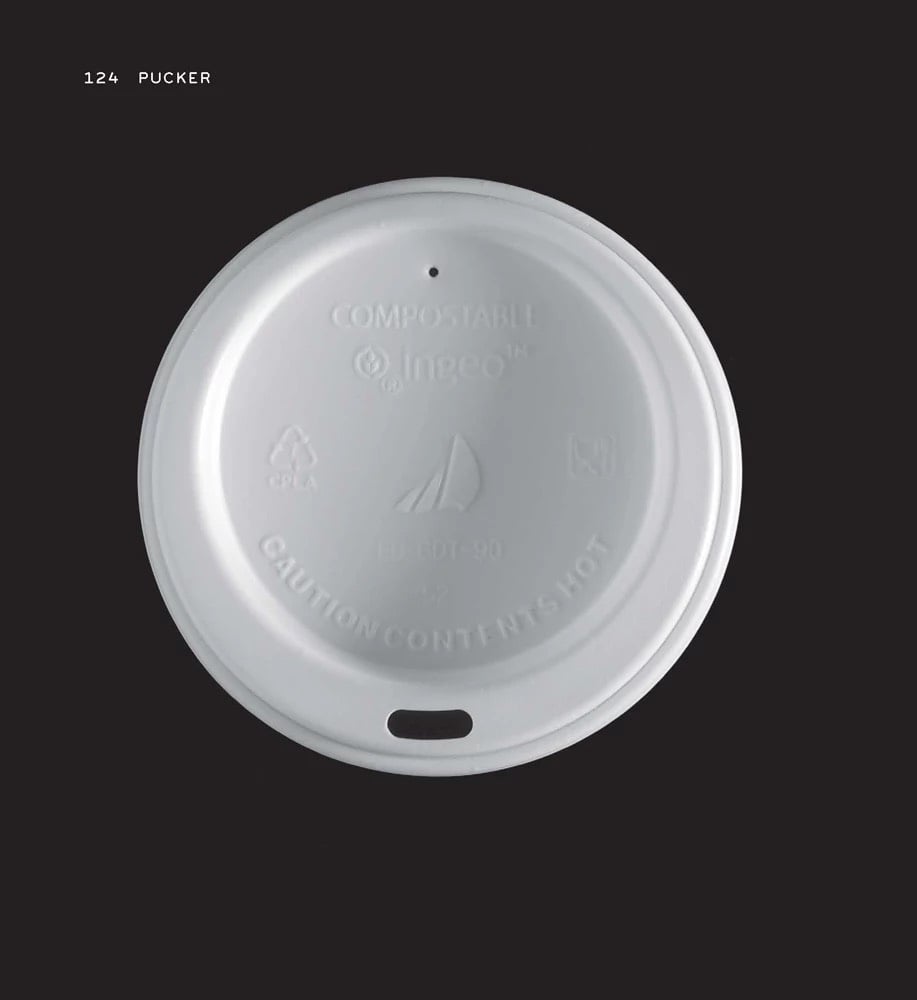Coffee Lids: Peel, Pinch, Pucker, Puncture


You’d think it’d be simple enough: make a disposable lid for a takeout coffee cup. You should be able to drink the coffee without removing the lid and the lid should stay on if the cup tips over (most of the time). But this simple design challenge has been solved in many different ways, as evidenced in Louise Harpman’s and Scott Specht’s forthcoming book, Coffee Lids: Peel, Pinch, Pucker, Puncture.
The book is a partial catalogue of the authors’ extensive collection of coffee lids. Photos of the lids are organized into groups based on what you do with the lid to get at that sweet sweet beverage: peel, pinch, pucker, or puncture. They explained the four types of lid in an article for Cabinet magazine in 2005.
Certain lids, such as the Solo Traveler (1986) designed by Jack Clements, require the drinker only to place his or her mouth over the protruded polystyrene proboscis. The pucker-type lid requires its user to drink through the lid, not from the cup, as is the case in the peel-type lids. The Solo Traveler is the lid that Phil Patton championed in his 1996 article in I.D. magazine and also the lid that art and design curator Paola Antonelli selected for inclusion in last year’s Museum of Modern Art exhibition, “Humble Masterpieces.” This type of lid offers a certain degree of “mouth comfort” and also has added “loft” space within the structure of the lid to accommodate beverages with frothy tops.
What a phrase: “protruded polystyrene proboscis”. Harpman also gives a short tour of the collection in this video:





Stay Connected